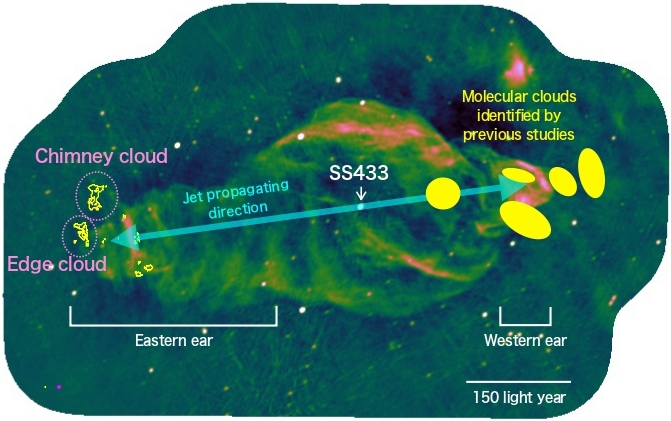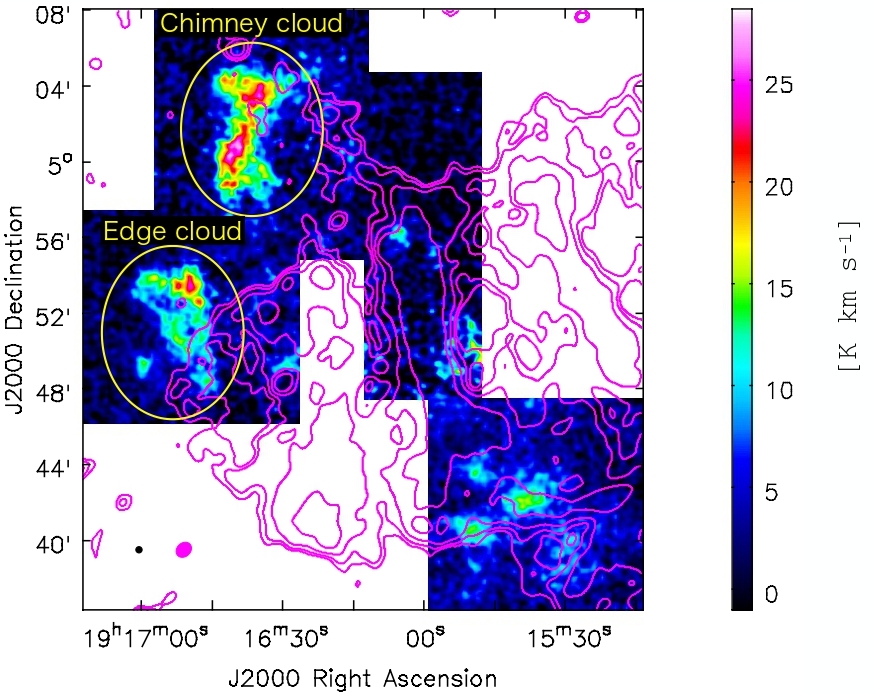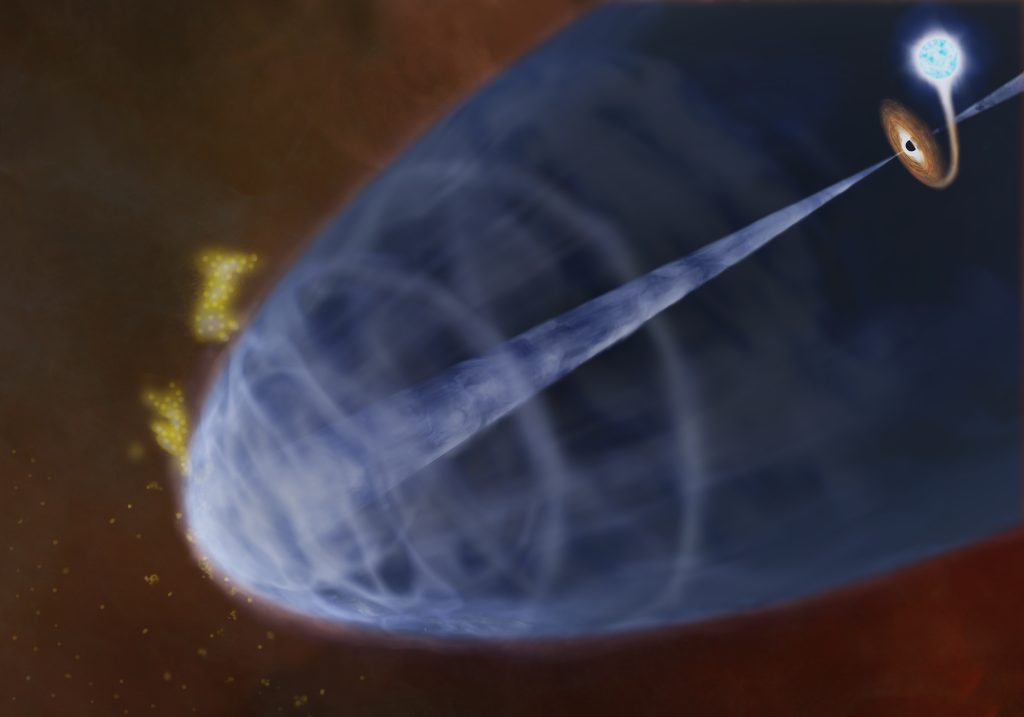Division of Science, NAOJ
Newly discovered molecular clouds that may be interacting with the astrophysical jets of the most active microquasar in our galaxy
Summary:
Haruka Sakami, a researcher at Kagoshima University, and her research team from the National Astronomical Observatory of Japan and Nagoya University have discovered molecular clouds in the terminal region of the jet from the microquasar SS433 through observations using the Nobeyama 45-m radio telescope and the ASTE. The complex velocity and density structures of the molecular cloud indicate that it may be interacting with the jet. Considering the low volume-filling factor of the clouds, there is a possibility that they are formed by the jet sweeping up small molecular cloud clumps. The results of this research were published in the January 27 issue of Publications of the Astronomical Society of Japan.
Background:
Compact objects such as black holes and neutron stars often form binary systems with normal stars, which are called X-ray binaries. Some of them eject astrophysical jets and propagate huge amounts of energy and matters to a distant region, and they affect the composition and evolution of our galaxy. Especially microquasars, very active X-ray binaries ejecting jets with relativistic speed, have a significant impact on the surrounding environment. Their jets interact with the interstellar medium (ISM) and change the state. Through this process, the jets are believed to encourage or suppress the formation of molecular clouds, although the details of the process have not been understood well.
To investigate the process, we focus on the most active microquasar in our galaxy, SS433. It ejects the jets with a speed of 0.26 times the speed of light and varies the shape of the surrounding radio nebula W50. The elongated structures of W50 are called “ears” and are believed to correspond to the surface structure of the SS433 jet (Fig. 1). Some previous studies identified many molecular clouds at the surface of the western ear. We focused on the eastern ear and tried to identify new molecular clouds with the Nobeyama 45-m radio telescope and the ASTE.

Results and discussions:
We identified two large molecular clouds at the eastern edge region of W50, named “chimney cloud” and “edge cloud” (Fig. 2). They show a velocity shift of about 1 km s-1 at the surface of the ear. They also have some characteristic velocity spectrum implying the existence of any external forces. In addition, they have a density gradient towards the surface of the ear. Therefore, we suggest that they are colliding with the eastern ear, i.e., the SS433 jet terminal region.
We investigated them quantitatively and revealed that their densities are lower than typical clouds while they radiate the 13CO(J=1-0) line emission. As a scenario that explains these results without contradiction, we suggest that these molecular clouds consist of tiny molecular clumps, which are too small not to resolve with the Nobeyama 45m telescope. In this case, the density should be underestimated, and our results are well explained. We also consider the formation scenario of these molecular clouds, i.e., the SS433 jet sweeping up and collecting the tiny clumps (Fig. 3). It means that the microquasar jet can form molecular clouds not only by interacting the ISM and changing the state directly.
Future prospects:
Through future additional observation, we will reveal the details of how the microquasar jets affect molecular cloud formation. In addition, future instruments should improve the observation quality and enable us to investigate other microquasars as well. We expect to understand the contribution of microquasar (and X-ray binary) jets to galaxy evolution.


Related Links:
Kagoshima Univ.:https://www.nro.nao.ac.jp/news/2023/0518-sakemi.html

